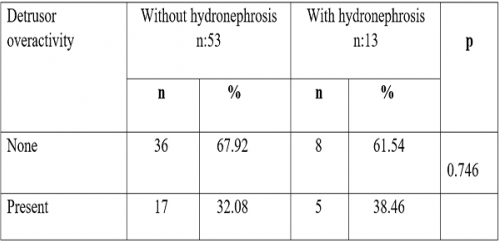Objective: To compare the efficacy and safety of polyacrylamide hydrogel (PAHG) injections with trans-obturatuar tape (TOT) surgery for managing stress urinary incontinence (SUI) in women and to assess treatment outcomes.
Materials and Methods: This retrospective cohort study involved 61 women diagnosed with SUI from 2022 to 2024. The study divided the patients into two groups: one comprising 32 patients who underwent TOT surgery and another comprising 29 patients who received PAHG injections. The key variables analyzed included demographic data, operation time, hospital stay, and patient satisfaction measured using the visual analog scale (VAS). Complications were recorded using the Clavien-Dindo classification. Statistical analyses were performed to identify the factors influencing the outcomes, including independent sample t-tests and regression models.
Results: The TOT group showed a higher treatment success rate, with 93.75% of patients having a resolution of SUI symptoms than the PAHG group (82.76%). PAHG demonstrated advantages in shorter operation times (mean difference, 8.31 minutes, p
